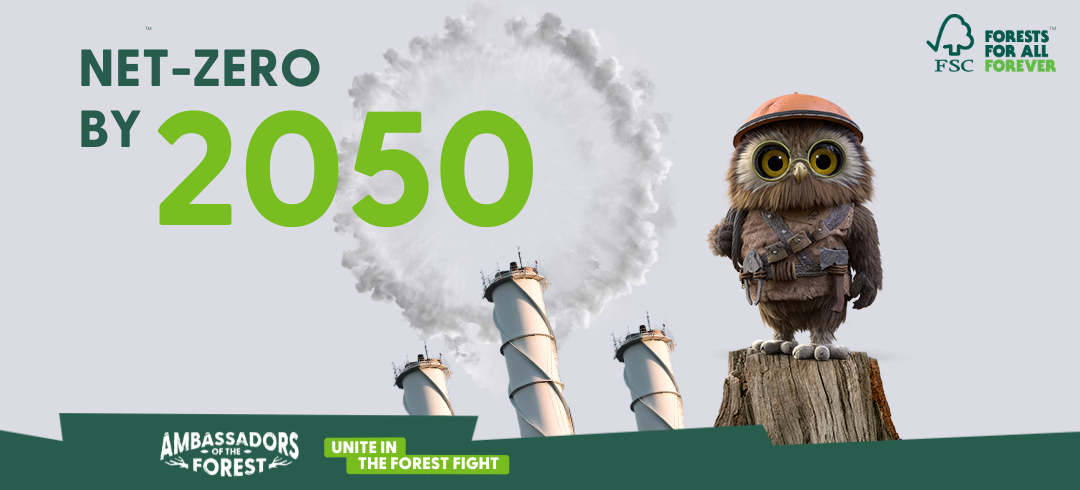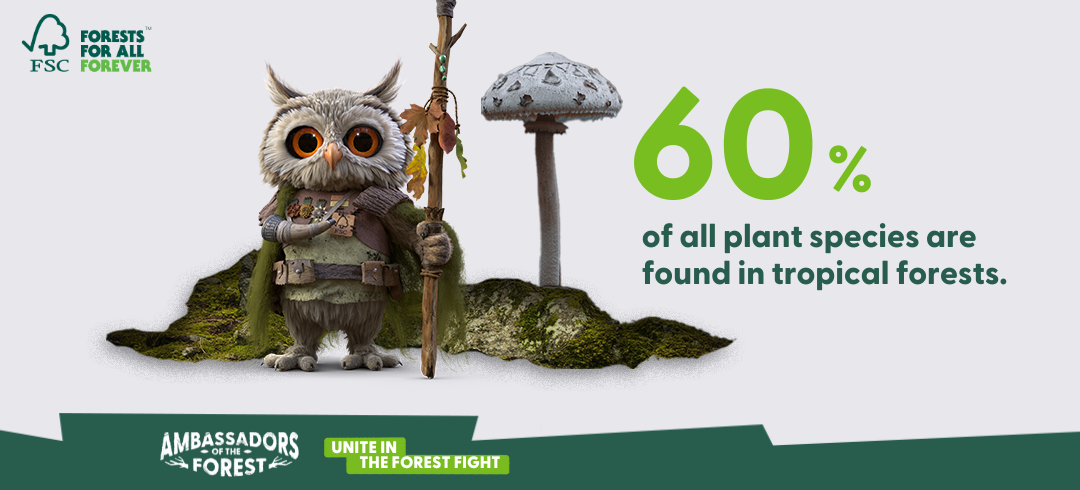As the world grapples with the climate crisis and biodiversity loss, it’s time for bold, decisive action. The private sector plays a crucial role in advancing sustainability, not only within their own operations but also through support for responsible forestry initiatives. In our "Unite in the Forest Fight" blog series, this is the first of three articles that unpacks the importance of forests in our collective efforts against the climate crisis and biodiversity loss.
The climate crisis and biodiversity loss are intertwined crises that demand urgent attention. The temperature rises signifies more than just a number – it’s the line between manageable challenges and catastrophe. While we can mitigate some effects at various temperatures, crossing the 1.5°C threshold reveals a tipping point we’re beginning to experience. However, it's not about doom and gloom; it's about recognizing the power we hold to make positive change. The path to a sustainable future is within reach, and the private sector plays a significant role.
No escaping the spotlight
The pressure on companies to act has intensified and urgency compels us to deliver more meaningful and sustained results. The private sector, under the spotlight of society's expectations, must take science-based, transformative actions.
We’ve seen businesses increasingly join the fight to combat the climate crisis and biodiversity loss. Last year there was an 80%1 increase in companies committing to ambitious climate targets, with approximately 2,4002 of them aligning with the Science Based Targets Initiative (SBTi). The pressure on companies to act doesn't come from one source alone though. In larger companies, 70%3 of CFOs feel client pressure, while smaller companies grapple with regulatory concerns. Employees, investors, and civil society all also call for action. This reflects the growing awareness of climate change's impact, and it's not just a business obligation - it's also about staying competitive in the market.

Current projections show an approximate 10%4 rise in emissions by 2030, threatening natural habitats and mass species extinction. Importantly, it’s also crucial to recognize that biodiversity loss isn’t solely a consequence of the climate crisis; it’s also driven by habitat destruction and unsustainable practices.
Forests: Not just climate heroes, but biodiversity hotspots too!
Biodiversity loss and the climate crisis are two sides of the same coin. Traditionally, efforts to confront these problems have addressed them as separate and distinct. But the challenges are linked, and so too are the solutions. To understand the evolving landscape of climate action, it's crucial to define what effective climate action involves — abiding to the mitigation hierarchy and reducing emissions within the value chain and subsequently promoting reductions and removals beyond it. Within this context, the SBTi serves as a structured framework to guide businesses.
The SBTi's mitigation framework emphasizes that companies should prioritize emissions prevention and reduction within their value chain before considering options like carbon offsetting. However, the pressing global need to reach the net-zero by 2050 has led to a call for businesses to take an additional step, termed 'Beyond Value Chain Mitigation' (BVCM). BVCM encourages businesses to explore opportunities outside their value chain to mitigate greenhouse gas emissions or enhance carbon sequestration efforts.
This expanded approach encompasses activities such as supporting sustainable forestry. Forests play a crucial role in combating the climate crisis by capturing and storing carbon dioxide. In FSC-certified forests, carbon-storage capacity increases by 17% over a management cycle. By avoided deforestation and peatland impact, reforestation, and soil sequestration in agriculture, close to 7 gigatons of CO2 emissions can be reduced per year by the end of this decade5.

Forests are not just climate heroes; they are also biodiversity hotspots. These ecosystems are home to a diverse array of species6, including 80% of the world's amphibians, 75% of our birds, and 68% of our mammals. Furthermore, approximately 60% of vascular plant species thrive in tropical forests. Protecting this biodiversity is critical, as every facet of fauna and flora in these landscapes contributes to forest health and resilience in the battle against the climate crisis.
Be inspired by success stories from businesses dedicated to sustainable forestry here. Learn about FSC's climate solutions and how your company can become a steward of the forest by subscribing to our institutional newsletter.
[1] [2] We Mean Business (2022). We Mean Business Coalition Annual Report 2022 https://www.wemeanbusinesscoalition.org/wp-content/uploads/2023/07/WMBC-Annual-Report-2022.pdf (accessed 31 July 2023).
[3] Deloitte (2019). Feeling the heat? https://www2.deloitte.com/us/en/insights/topics/strategy/impact-and-opportunities-of-climate-change-on-business.html (accessed 25 July 2023).
[4] United Nations Climate Action (nd) For a liveable climate: Net-zero commitments must be backed by credible action. https://www.un.org/en/climatechange/net-zero-coalition (accessed 25 July 2023).
[5] McKinsey (2021) Why investing in nature is key to climate mitigation. Natural climate solutions are key to mitigation | McKinsey (accessed 28 September 2023).
[6] Food and Agriculture Organization of the United Nations (2022). The State of the World’s Forests 2022 https://www.fao.org/documents/card/en/c/cb9360en (accessed 31 July 2023).
